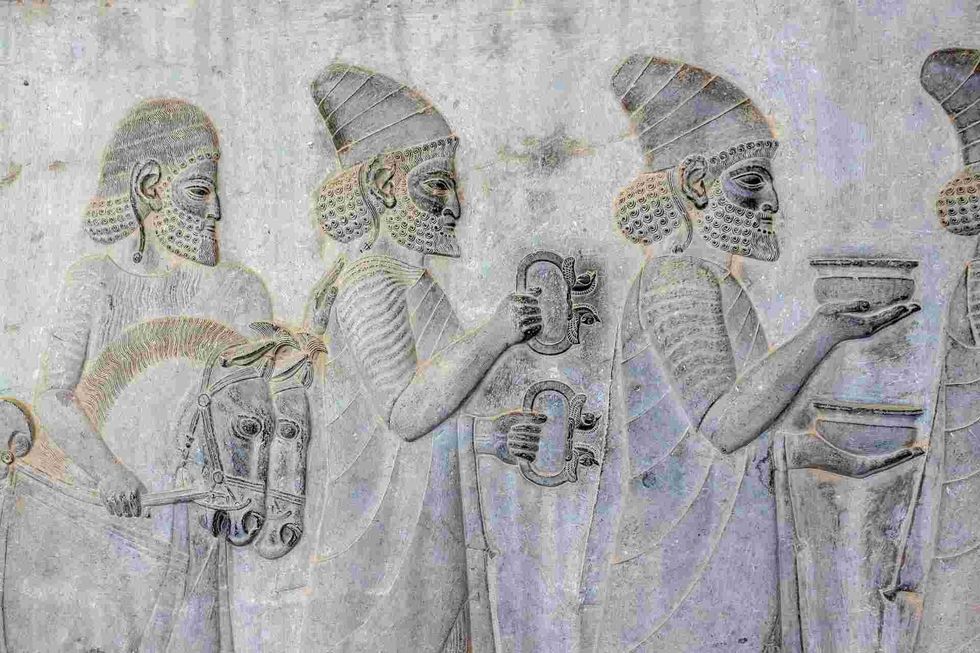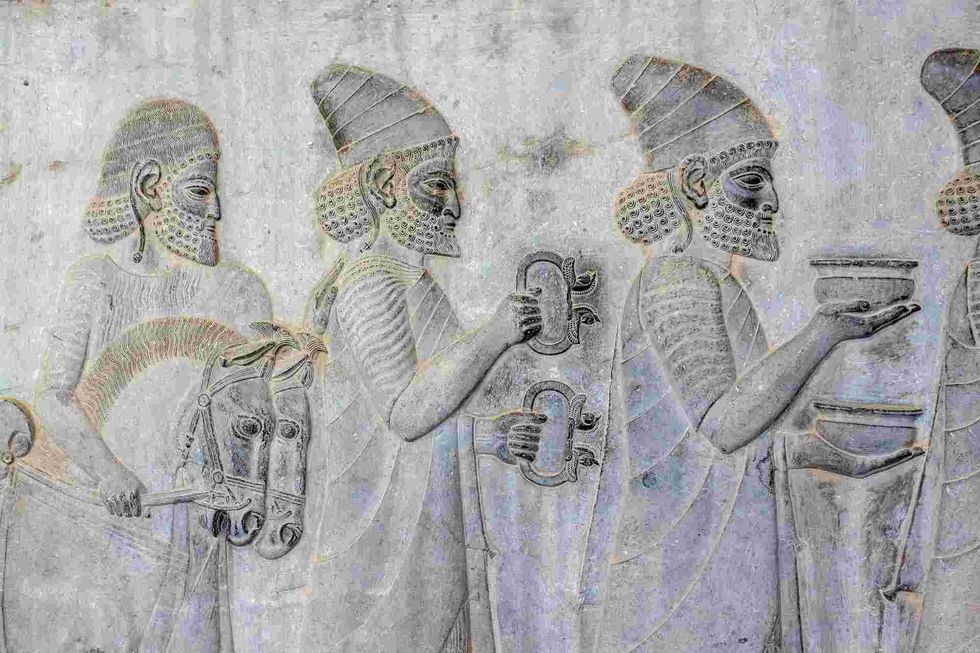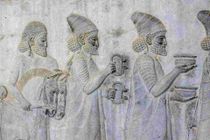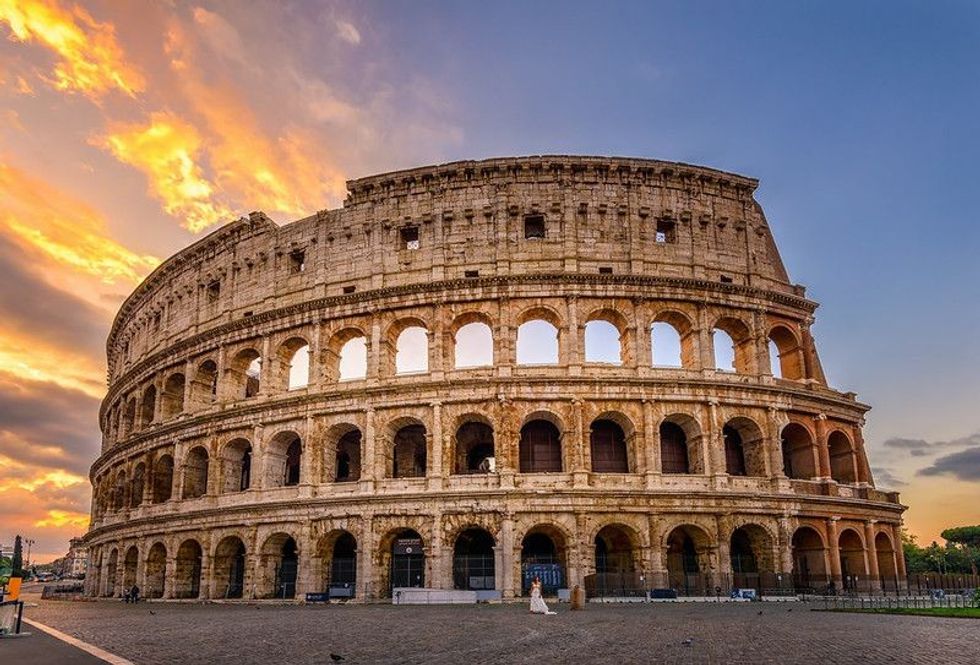43 Ancient Persia Facts: Learn About Their Rich Cultural Background
Persia, modern-day Iran, is one of the oldest colonized historic regions of southwestern Asia.
For centuries, ancient Persian culture had an indomitable influence throughout the east. Ancient Persians introduced many concepts in innovations that were often acknowledged in modern life.
Are you curious about knowing ancient Persian history, their culture, civilization, and empire? Then let us get down to some astounding facts about ancient Persia!
The name Persia was formerly titled for a southwestern Iranian plateau called Persis (Parsa, modern-day Fars). Later, ancient Greeks gradually extended the use of the name to the whole Iranian plateau.
The people of the country (Indo-Iranian tribes) called themselves Aryans and have traditionally named their region Iran, which means land of the Aryans. In due course, the name Iran was officially adopted in the year 1935.
The ancient Persian Empire, popularly known as the Achaemenid Empire, was the first Persian Empire founded by Cyrus the Great in the sixth century B.C. The Achaemenid Empire was based in western Asia, and under Xerxes I, it stretched to a great extent of central and northern ancient Greece.
The empire drew its name from Achaemenes, who ruled Persis from 705-675 BCE. The Tigris River confined the Persis to the west and the Persian Gulf to the south.
The empire was more extensive than any other empire in world history, which was expanded to a total of 2.1 million sq miles (5.5 million sq km) from the Balkans and eastern Europe (the west) to the Indus Valley (the east).
Initially, the Persians, along with the Medes tribe, overthrew the Assyrian Empire of Mesopotamia in 612 BCE and formed their own empire. The Median Empire was then toppled by their vassal Cyrus the Great, who extended his power by conquering Lydians and the Neo-Babylonians, thus formally establishing the Achaemenid Empire.
Scroll down to learn more facts about ancient Persia that showcase their rich cultural background!
If you're interested in reading similar articles, then check out our other articles, such as ancient Pompeii facts and ancient Puebloans facts.
Persian Gulf War
Did you know that Persians were the first to set up regular communication routes between Asia, Africa, and Europe? They constructed plenty of new roads and were the first to develop the postal service during that period. Isn't it amazing?
Have you watched the movie named 300? Then you might have an idea of the Greco-Persian Wars since they are the subject of this famous movie.
The Persian Gulf war had its roots in prehistoric times that date back thousands of years. It was a very long conflict between Mesopotamia and Elam.
In the battle of Qadisiyah in south-central Iraq, Arab forces defeated the Persians and seized control of Mesopotamia. In the sixth century, Persian kings invaded Babylon, and since then, the war between Iran and Iraq has been complicated.
King Darius the Great recognized that to maintain a vast empire, it needed to be properly structured and organized. To make it function efficiently, he divided it into provinces and placed satraps to govern it.
The Persian Empire detained centralized and unified power over the entire kingdom through the king, which was supported by the military strength of the huge Persian army.
He also standardized the coinage system as a new, uniform monetary system. This made it easier for traders from other countries to stick to the system.
Zoroastrianism was adopted as the official state religion of the ancient Persian Empire. It is a monotheistic religion founded on principles of the Persian prophet Zoroaster and one of the oldest religions in the world. Ahura Mazda, also known as Ohrmazd, is the supreme god in this religion.
Artaxerxes II was the longest-reigning Persian King, who ruled from 404-358 BC. His reigning period was a time of tranquility and prosperity for the empire.
Fall Of The Persian Empire
Persia is a Latin and Greek native word implying the empire of the people who have their origin from Persis (Pars or Parsa, modern Fars).
The Persian Empire is the name given to an array of dynasties centered in Persia, and it gradually reached its peak by encompassing areas of Mesopotamia, Israel, Egypt, parts of Afghanistan, Pakistan, and Turkey.
The Persian Empire eventually started declining under Darius's son, Xerxes, who incited the unsuccessful campaign to conquer the Greeks.
The empire lasted approximately 200 years, from 559 BC to 331 BC, until the King of the Greeks, Alexander the Great, defeated King Darius III in the Battle of Issus in 330 B.C., and he conquered most of the Achaemenid Empire.
After the death of Alexander the Great, the Seleucid Empire took over most of the empire. The Parthian Empire founded by Arsaces invaded ancient Persia in 232 BC and ruled for almost five centuries. The last dynasty was the Sassanid Empire which took over ancient Persia in 224 AD and ruled until the Arabs invaded in 642 CE.
Key factors to Persia's communication network were the postal system and highways rebuilt by the Persian king Darius the Great.
Darius introduced a postal service that spread over the entire empire to establish widespread communication. Did you know that to facilitate rapid communication, the Royal Road was built, an ancient highway spread all over his empire from Susa to Sardis? That is incredible!
The royal city of Susa (modern-day Shushan) is amongst one of the oldest cities founded in 4395 BC, which later became part of Elam and then Persia.
How did Alexander the Great conquer the Persian Empire?
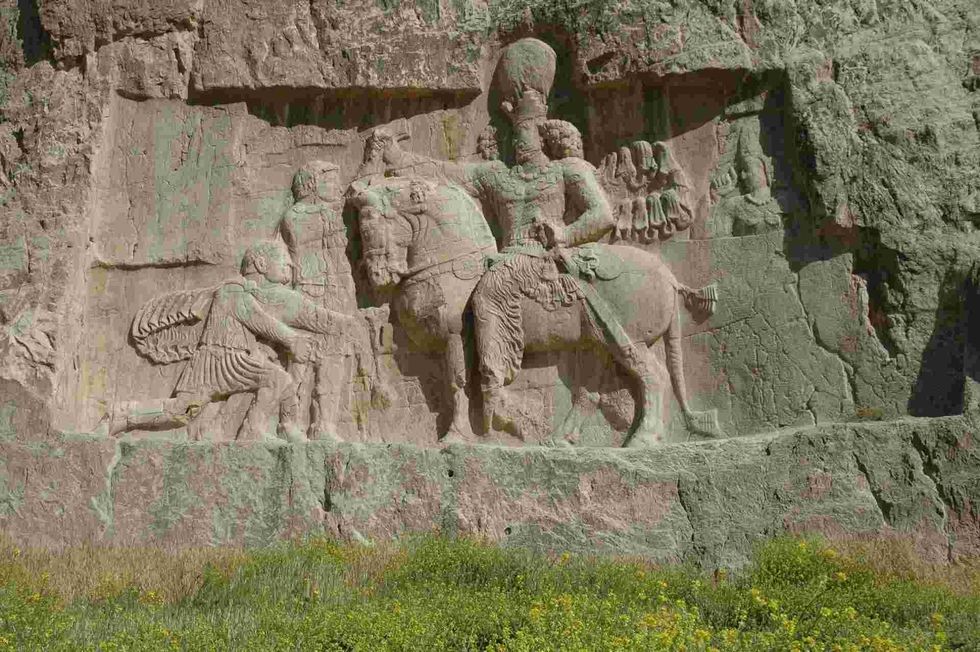
The first Persian Empire ruler Cyrus the Great was called the Shahanshah of Persia and Cyrus the Elder by Greeks.
Cyrus the Great was the first king of ancient Persia and was distinct from other emperors. He freed the slaves from conquered kingdoms, thus establishing racial equality and allowing them to choose their religion.
Alexander the Great underwent a series of battles to conquer the Persian Empire, including the battle of Granicus, the battle of Issus, and finally, the battle of Gaugamela. He eventually took over King Darius III and conquered the Achaemenid Empire in its entirety.
The first major battle was the Battle of Granicus, which took place on the banks of the river Granicus in 334 BC. After his decisive victory in Granicus, Alexander proceeded to conquest Asia Minor (modern-day Turkey).
The Persian navy was vastly superior to Alexander's navy, so he sought to capture coastal settlements to reduce the power of the Persian Empire. Alexander first captured Issus causing instability on Darius's remaining troops. This was an enormous victory for the Macedonian Empire against the mighty Persian army.
The last battle was at Gaugamela in 331 BC, where the Persian army was at its greatest. Still, Alexander's reserve troops captured the back of Darius's army and pacified the rest of Persia within no time.
Cyrus the Great, commonly known as Cyrus II of Persia, was the founder of the Achaemenid Empire. The accurate year of his birth is unknown, but historians believe he was born between 598 and 600 BC. Cyrus the Great has been a great inspiration to various leaders for centuries.
He established the Achaemenid dynasty and implemented many rules and structures that guided empires even centuries later.
The Persian Empire, which emerged under the rule of Cyrus the Great, had multi states governed from four cities: Babylon, Pasargadae, Ecbatana, and Susa. The empire's capital city was the great Persepolis.
Cyrus II also appears briefly in the Bible as the ruler who liberated the Jewish people from the captivity of Babylonia. He not only preached but also practiced religious tolerance. When Cyrus II conquered Babylon in 539 BC, he freed the Jewish population and allowed them to return to Judah where he constructed the second temple in Jerusalem.
Many works by Greek historians, including Xenophon, Ctesias, and Herodotus, recorded well-known legends about the ruler in his history.
Persians adored Cyrus the Great and described him as an ideal leader. Even the Greek king, Alexander the Great, became enthralled with Cyrus II after reading Greek historian Xenophon's Cyropaedia, a biography about Cyrus the Great.
Alexander, an admirer of Persia's founder Cyrus the Great, included various Persian customs into Macedonian culture to secure respect for Persian kings.
Ancient Persian Art And Architecture
The Achaemenid Empire, sometimes called the Iron Age dynasty, was a global hub of religion, culture, art, science, and technology.
The Persian architecture is distributed over a wide area along with Turkey, Tajikistan, Iraq to Uzbekistan, and the Caucasus to west Asia. Their history dates back to 5000 BC.
Ancient Persian architecture displays a great variety of majestic buildings, palaces, and mosques. The typical characteristic of Persian art and architecture is an amalgamation of extensive elements of Mesopotamia, Greek and Assyrian styles.
In ancient Persia, Persepolis was one of the architectural contributions with the Palace of Darius and the Behistun Inscription.
Ancient Persians created artwork in innumerable forms, including ivory carvings, metal work, rock carvings, ceramics, elegant bronzes, carpet weaving, and architecture.
Hand-woven Persian rugs are made of silk, wool, and cotton. They are world famous for their design and bright colors. The oldest-known Persian carpet has been discovered in the Siberian Altai Mountains, which gives us an insight into skills that existed in ancient times.
Persepolis, situated in the plains of southern Zagros mountains of Iran, was the ceremonial capital in Persian rule (c. 550–330 BC). The earliest remains of Persepolis dating back to 515 BC symbolize the ancient Persian architecture style.
Ruins of the ancient Persian capital city Persepolis and the Persian Garden (collection of nine gardens) have been declared World Heritage Sites by UNESCO.
Ancient Persian Culture
In ancient history, Persia had one of the greatest ancient civilizations. Archaeological sites in the country have confirmed that ancient Persian civilization dates 100,000 years to the Paleolithic Age with semi-permanent settlements.
Ancient Persia was inhabited by over half the world's population and built many essential structures that have become a great source of knowledge among historians.
With the rise of the Achaemenid Empire, the ancient Persian culture began to flourish during the reign of Cyrus II. It is known for its conquering multicultural policy which includes constructing infrastructures, such as roads and a postal system; usage of an official language throughout its territories; development of civil services such as possession of a huge, professional army.
The Persian Empire's successes inspired later empires to use similar systems.
As the empire developed and surrounded other artistic centers of early culture, a contemporary style appeared due to the influence of these sources.
Despite the fall of the Persian Empire, its culture thrived for many years over time, even today. After Arabs invaded the Persian Empire, Persians chose to accept the new culture; however, they held onto their identities through literature, language, and arts. Eventually, Islam religion displaced the native Zoroastrian religion.
The primary goods traded from Persia were valuable metals such as gold, silver, copper, and iron. Under the rule of Darius I, the first coin was minted, and a network of roads was built, which promoted and made trade easier.
Persia's leading source for the economy was agriculture and the tax tribute system. In addition to this, trade tariffs were one of the main sources of revenue for the empire.
Ancient Persians developed the system of refrigeration, known as a Yakhchal. Persian poetry is the most beautiful poetry globally, and Persian tile art makes use of colorful stone mosaics. The Greek historian Herodotus revealed how Persians criticized Greeks for not eating dessert and how Persians drank wine without water in his writings.
Persians enjoyed sports like horsemanship, archery, boxing, fencing, hunting, polo, swimming, javelin-throwing, and wrestling.
The Persian cultural value of knowing and telling the truth is a vital aspect of Persian culture. It was one of the vows a soldier took before entering service.
Persians didn't waste any resources adapting to their environment and depended on their surroundings for water, shelter materials, minerals, and other things. Therefore they modified their environment by building tombs and houses and making clothes fit for the weather.
Persians had a geography that linked lands from India to Egypt in a vast commercial zone. This provided them with an abundance of farmland they used efficiently to plant and harvest vegetation.
Here at Kidadl, we have carefully created lots of interesting family-friendly facts for everyone to enjoy! If you liked our suggestions for ancient Persia facts, then why not take a look at ancient Mesopotamia facts or ancient Mali facts.
We Want Your Photos!
More for You
Bachelor of Science specializing in Botany, Master of Science specializing in Clinical Research and Regulatory Affairs

Sridevi ToletyBachelor of Science specializing in Botany, Master of Science specializing in Clinical Research and Regulatory Affairs
With a Master's degree in clinical research from Manipal University and a PG Diploma in journalism from Bharatiya Vidya Bhavan, Sridevi has cultivated her passion for writing across various domains. She has authored a wide range of articles, blogs, travelogues, creative content, and short stories that have been published in leading magazines, newspapers, and websites. Sridevi is fluent in four languages and enjoys spending her spare time with loved ones. Her hobbies include reading, traveling, cooking, painting, and listening to music.
Bachelor of Arts specializing in English Literature

Nishtha DixitBachelor of Arts specializing in English Literature
Nishtha is an experienced SEO writer and editor, with a passion for writing and self-expression. She is currently pursuing an undergraduate major in Literature and Communication and a minor in Political Science from the University of Delhi. Nishtha has completed a certificate master course in English from the British Council and has been appointed as the editor for the bi-monthly magazine of the University of Delhi.
Disclaimer
1) Kidadl is independent and to make our service free to you the reader we are supported by advertising. We hope you love our recommendations for products and services! What we suggest is selected independently by the Kidadl team. If you purchase using the Buy Now button we may earn a small commission. This does not influence our choices. Prices are correct and items are available at the time the article was published but we cannot guarantee that on the time of reading. Please note that Kidadl is a participant in the Amazon Services LLC Associates Program, an affiliate advertising program designed to provide a means for sites to earn advertising fees by advertising and linking to Amazon. We also link to other websites, but are not responsible for their content.
2) At Kidadl, we strive to recommend the very best activities and events. We will always aim to give you accurate information at the date of publication - however, information does change, so it’s important you do your own research, double-check and make the decision that is right for your family. We recognise that not all activities and ideas are appropriate for all children and families or in all circumstances. Our recommended activities are based on age but these are a guide. We recommend that these ideas are used as inspiration, that ideas are undertaken with appropriate adult supervision, and that each adult uses their own discretion and knowledge of their children to consider the safety and suitability. Kidadl cannot accept liability for the execution of these ideas, and parental supervision is advised at all times, as safety is paramount. Anyone using the information provided by Kidadl does so at their own risk and we can not accept liability if things go wrong.
3) Because we are an educational resource, we have quotes and facts about a range of historical and modern figures. We do not endorse the actions of or rhetoric of all the people included in these collections, but we think they are important for growing minds to learn about under the guidance of parents or guardians.
